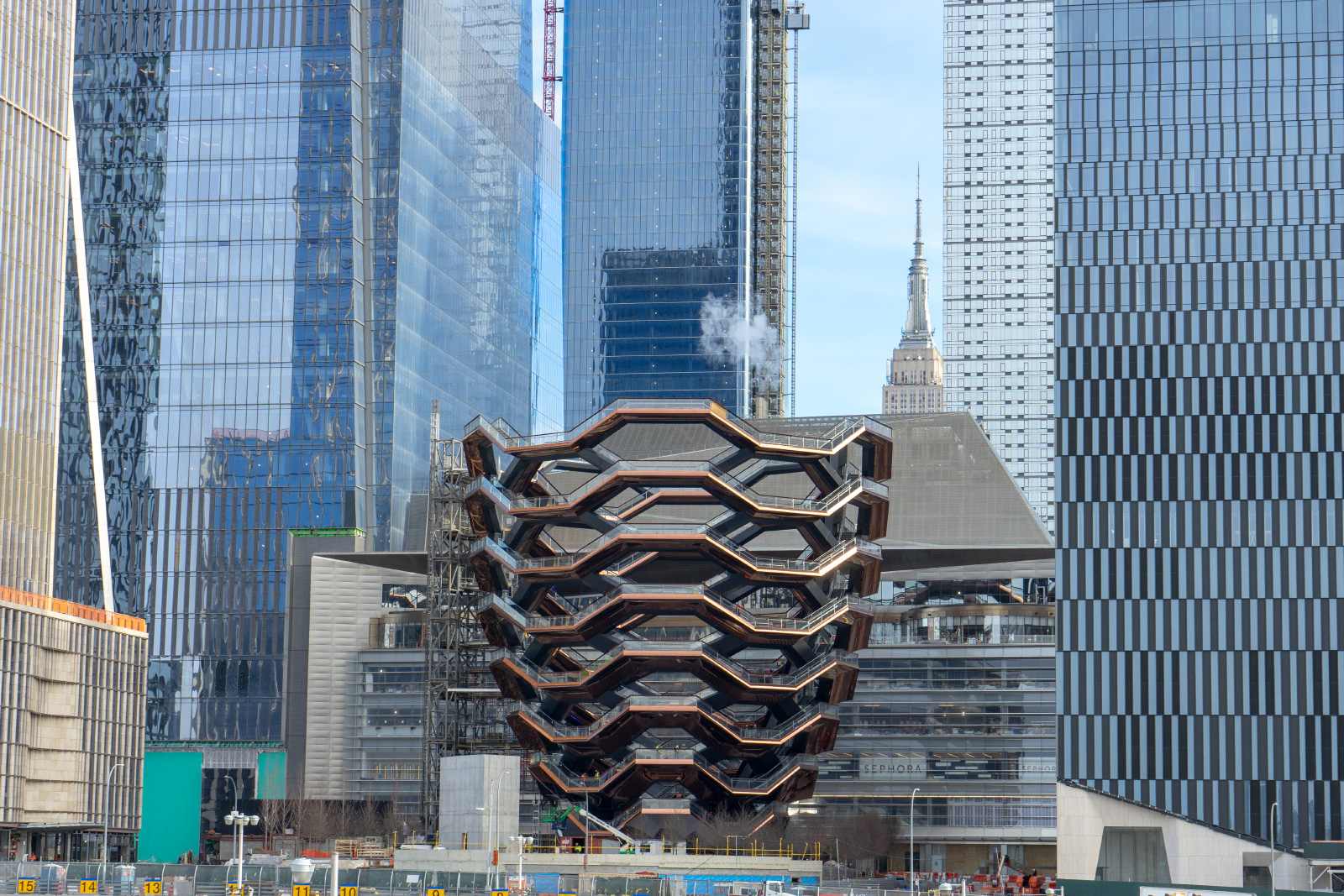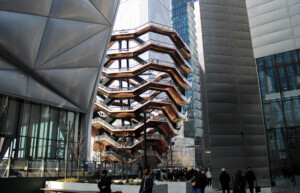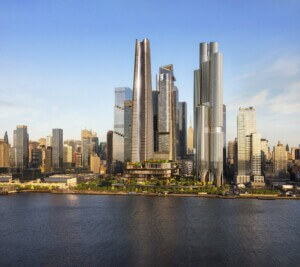The biggest stories of 2020 weren’t necessarily the most controversial, and vice versa, but aside from the pandemic, there were plenty of happenings that drew outrage this year from AN’s audience and apologies from involved parties.
While our roundup of 2019 controversies involved labor issues, people falling down, and residents angry at unusually shaped buildings, the controversies of 2020 were uniformly more dire. Whether our perception has been colored by the novel coronavirus pandemic or if things really were just worse in 2020 is hard to say (especially as many of these events took place before March), but why don’t you, the reader, decide?
Behold, in no particular order, the architecture world’s most controversial moments of 2020:
Bjarke buddies up with Bolsonaro in Brazil

On Tuesday, January 14, Danish wunderkind Bjarke Ingels was spotted in Brazil with that country’s far-right President Jair Bolsonaro and quickly drew condemnation.
Ingels was reportedly touring Brazil as part of a Nomade Group delegation, investors who had been invited by Minister of Tourism Marcelo Álvaro Antônio to explore sustainable tourism opportunities. The backlash online was swift given the President’s history of climate denialism, and only intensified when Culture Secretary Roberto Alvim was fired after lifting phrases and imagery from Nazi propaganda for a speech about funding national art that Bolsonaro finds acceptable. Heated back-and-forths over whether Ingels’ meeting was appropriate broke out on Twitter, as well as in AN’s own comments.
Ultimately, Ingels issued a statement saying he was trying to change the country’s practices from within, saying criticism was unwarranted because naysayers were only looking at one side of the issue:
“As much as I would enjoy working in a bubble where everybody agrees with me, the places that can really benefit from our involvement are the places that are further from the ideals that we already hold.”
Eyal Weizman barred from U.S. before Forensic Architecture retrospective
As Forensic Architecture founder Eyal Weizman was preparing to fly to Miami from his home of London for the opening of the collective’s first major U.S. exhibition at Miami Dade College’s Museum of Art and Design, he received a rude awakening. The U.S. Embassy informed him that his visa, and ability to travel to the United States, had been revoked.
According to the embassy, “an algorithm had identified a security threat that was related to him.” When given the opportunity to “speed up the process” by giving names he felt might have been the cause for setting off alarms, Weizman refused to put his contacts in potential danger.
A draft executive order mandating neoclassical federal buildings draws ire
At the start of February, the “Making Federal Buildings Beautiful Again” draft executive order was brought to light, in which the White House will dictate that all future government structures be designed in the neoclassical style. It would force the General Service Administration (GSA) to rewrite the Guiding Principles for Federal Architecture, which it has used as the basis of its Design Excellence Program since 1962 while requiring all new and upgraded federal buildings to be designed in the antiquated “preferred and default style.”
While the GSA’s operational mandate currently requires that the agency stay away from any official style as to not date federal buildings, the Trump administration reportedly decided to act after finding many newly constructed facilities have “little aesthetic appeal.” The administration specifically cited San Francisco’s U.S. Federal Building by Morphosis and Miami’s Wilkie D. Ferguson, Jr. U.S. Courthouse by Arquitectonica.
Pushback was swift, and architects, preservationists, and institutions all came out swinging, saying imposing any kind of style on federal buildings was an attack on cultural diversity.
At the time of writing, the draft executive order remains just that; a draft that will likely be forgotten about by the Biden administration. However, on the ground, the GSA has been actively soliciting architects to design neoclassical facilities, such as the new federal courthouse in Fort Lauderdale, even without an official change to their operating policy.
Teen dies after jumping from the Vessel, and Related Company backs down from building a wall around Hudson Yards

Love it or hate it, Thomas Heatherwick’s Vessel, the $150 million, 150-foot-tall climbable sculpture, is here to stay. But much like the way the bronze honeycomb anchors Manhattan’s Hudson Yards, it also seemingly centers controversy.
First, at the very tail-end of 2019, developer Related Companies reached an agreement with the Department of Justice Civil Rights Division to add an additional elevator to the Vessel to bolster its accessibility. Then, on February 1, a teen died after jumping from the structure’s sixth floor, raising questions over whether the installation’s barrier height was sufficient.
At the perimeter of Hudson Yards, meanwhile, Related caught flak in January after Michael Kimmelman revealed for the New York Times that the real estate giant wanted to build a 720-foot-long, 20-foot-high concrete wall around the western and southern borders of Hudson Yards, effectively creating a shadow over the northernmost portion of the High Line.
After fielding days of intense criticism, Related later claimed that such a wall had never been in the cards:
“Our plan has always been to build an open space along the lines of this years-old rendering and we are working to manage the technical challenges to achieve this,” the company tweeted. “There has never been a wall along the High Line and there will never be a wall.”
Architects and designers call on the MoMA and more to remove Philip Johnson’s name
Less than three months ahead of the (delayed) opening of Reconstructions: Architecture and Blackness in America, the first exhibition at the Museum of Modern Art (MoMA) to examine the ties between architecture and African American and African diaspora communities, seven architects, artists, and designers featured in the forthcoming show have signed a letter demanding that the MoMA remove the name of the late Philip Johnson from all titles and public spaces due to what the letter describes as his “widely documented white supremacist views and activities.”
As the November 27 letter states, the racist, antisemitic worldview held by Johnson makes him “an inappropriate namesake within any educational or cultural institution that purports to serve a wide public.” The open call also went out to Johnson’s alma mater, the Harvard Graduate School of Design, and “any other public-facing nonprofit in the United States” that uses his name for honorific purposes.
The response was swift, and Harvard GSD dean Sarah M. Whiting announced in a December 5 letter that the school will no longer refer to a private residence at 9 Ash Street in Cambridge as the “Philip Johnson Thesis House.” Moving forward, the home, designed by and inhabited by Johnson while enrolled at the Harvard GSD in the 1940s, will now be known solely by its physical street address.
Readers were quick to comment and email from both sides of the issue; some decried “cancel culture” and what they saw as an attempt to erase the legacy of a foundational figure in architecture, while others pointed out that the FBI kept a 171-page file on Johnson’s fascist leanings and that these accusations had been well known his entire life.











